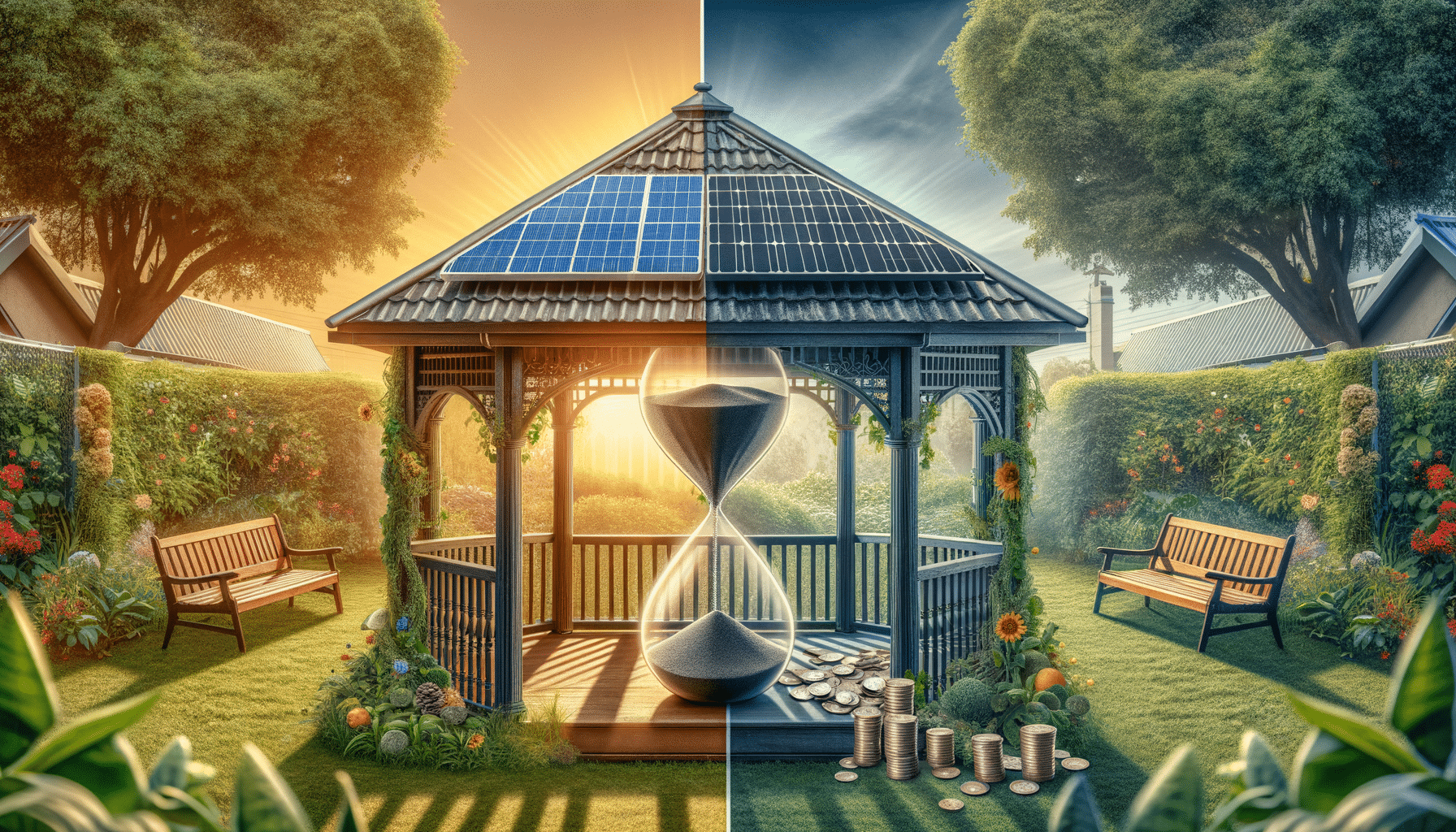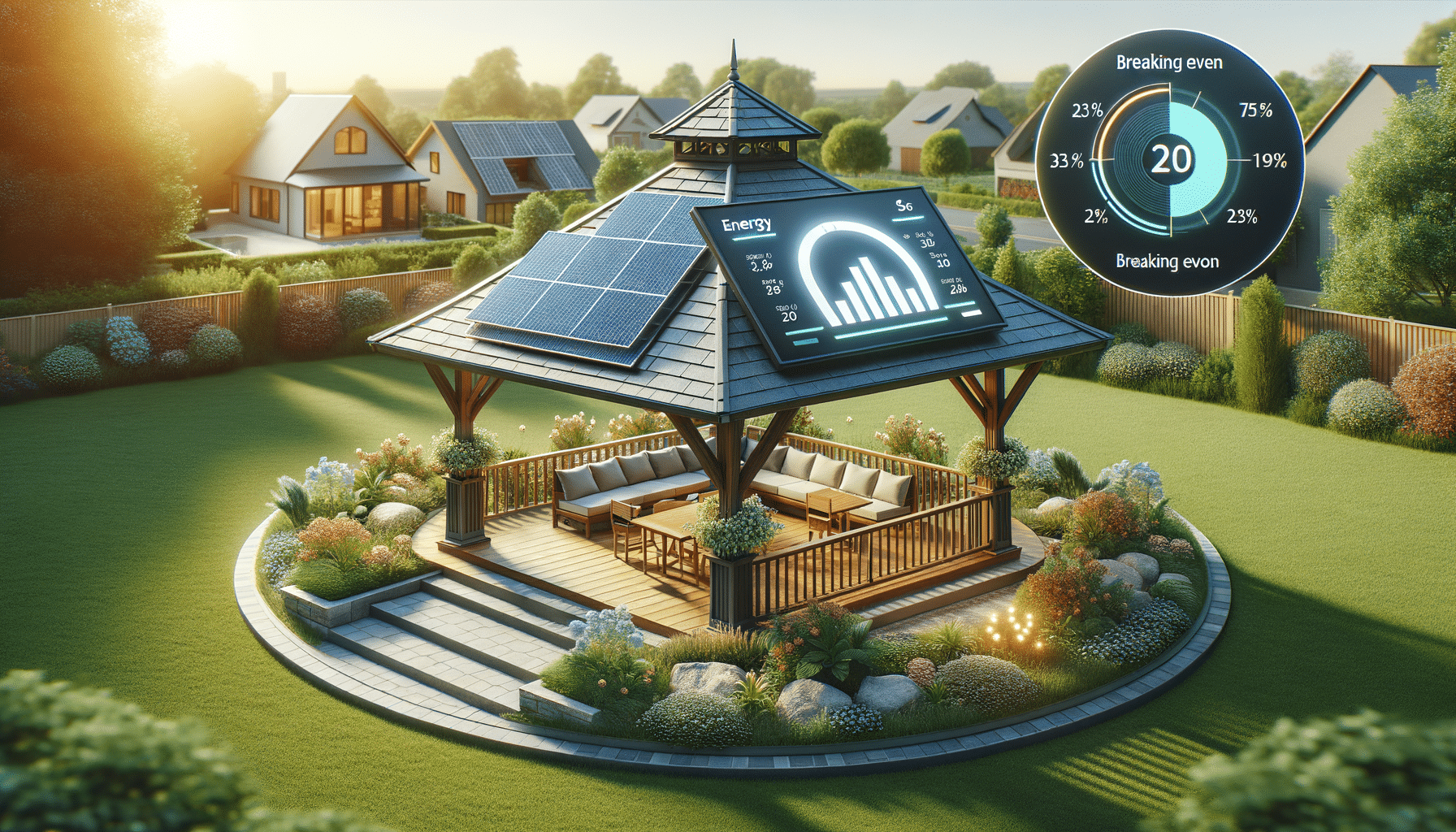
How Many Months Before a Solar Gazebo Covers Its Cost?
Introduction to Solar Gazebos
As the world continues to embrace renewable energy solutions, solar gazebos have emerged as an innovative and eco-friendly addition to outdoor spaces. These structures not only provide shade and aesthetic appeal but also harness solar power to reduce energy costs. Investing in a solar gazebo can be a significant decision, and understanding the financial implications is crucial. This article aims to explore the time it takes for a solar gazebo to cover its cost, providing a comprehensive look at the factors influencing this duration.
Understanding the Initial Investment
The initial cost of a solar gazebo can vary widely based on several factors, including size, materials, and the complexity of the solar system. On average, a basic solar gazebo might cost between $2,000 to $10,000. This cost typically includes the structure itself, solar panels, and installation fees. However, prices can escalate with additional features like integrated lighting, high-quality materials, or custom designs.
When considering the initial investment, it’s essential to factor in potential savings on energy bills. Solar panels on gazebos can power outdoor lighting, small appliances, and even contribute to the overall energy needs of a home. By reducing reliance on the grid, homeowners can see a decrease in their monthly electricity bills, contributing to the return on investment.
Calculating the Payback Period
The payback period for a solar gazebo is the time it takes for the energy savings to equal the initial investment. This period can vary significantly based on location, energy usage, and the efficiency of the solar panels. In sunny regions, where solar panels can generate more electricity, the payback period tends to be shorter.
For instance, if a solar gazebo costs $5,000 and saves $500 annually on energy bills, the payback period would be approximately 10 years. However, incentives such as tax credits or rebates can reduce this period, making solar gazebos a more attractive investment.
Benefits Beyond Cost Savings
While financial savings are a significant consideration, solar gazebos offer numerous other benefits. They contribute to a reduction in carbon footprint by utilizing renewable energy, aligning with global efforts towards sustainability. Furthermore, solar gazebos can enhance property value, making homes more attractive to environmentally-conscious buyers.
Additionally, these structures provide a unique aesthetic appeal and functionality to outdoor spaces. They can be customized to complement various architectural styles, offering a blend of beauty and practicality. The ability to power outdoor events or gatherings without relying on traditional electricity sources adds to their appeal.
Conclusion: Is a Solar Gazebo Worth the Investment?
Determining the worth of a solar gazebo involves weighing the initial costs against long-term benefits. For many, the combination of energy savings, environmental impact, and aesthetic enhancement justifies the investment. While the payback period can extend over several years, the eventual financial and ecological returns make solar gazebos a compelling choice for those looking to enhance their outdoor spaces sustainably.
Ultimately, the decision to invest in a solar gazebo should consider individual energy needs, location, and financial goals. As technology advances and solar solutions become more affordable, the appeal and practicality of solar gazebos are likely to increase, offering a harmonious blend of nature and innovation.


